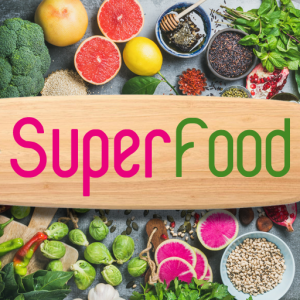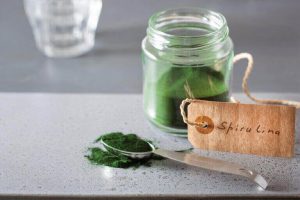Spirulina is a photosynthesizing cyanophyte that is able to grow in high sunlight and very alkaline conditions and high temperatures.
This algae has vitamin supplements in the diet. Spirulina will be introduced as a complete food source in the near future. Therefore, very extensive studies are being conducted at the global level on this unique algae and its derivatives.

Roya Algae Pars, in this article, intends to briefly describe the examples of the experiments conducted on the effects of spirulina consumption in human societies.
Because spirulina contains chlorophyll a, botanists classify it as a microalgae belonging to the class Cyanophceae, like higher plants. But according to bacteriologists, it is a bacterium because of its prokaryotic structure. Mexicans began to use this microorganism as human food. Its chemical composition contains protein (55-70%), carbohydrates (15-25%) and essential fatty acids (18%), vitamins, minerals and pigments such as carotene, chlorophyll and phycocyanin, which are pigments in the food industry. and used cosmetically. Spirulina is a great food, non-toxic and has anti-cancer, anti-viral, immune properties and also acts as a powerful antioxidant. There are significant changes in the performance of spirulina under stress conditions.
Cardiovascular risk factors are an important mechanism in the occurrence of type 2 diabetes and cardiovascular diseases, the effect of aerobic exercise and spirulina supplementation on some cardiovascular risk factors in overweight women with type 2 diabetes.
In this semi-experimental study, 28 type 2 diabetic and overweight women with an average age of 49.5±7.7 years were randomly assigned to aerobic + spirulina, aerobic + placebo, spirulina and placebo groups. Aerobic exercise program including 6 weeks (3 sessions per week) was performed with an intensity of 60-70% of maximum heart rate. The groups receiving the supplement received three 500 mg spirulina capsules daily before each meal for 6 weeks. Blood samples were collected during fasting conditions in the pre- and post-test stages. Data analysis was done using factor analysis of variance test (2 x 4) and dependent t-test with significance level (P < 0.05) using SPSS software. The research results showed a reduction in cholesterol, LDL and VLDL in the spirulina-exercise groups, spirulina from the pre-exam stage to the post-exam stage, and the reduction of LDL/HDL and CHOLS/HDL was observed only in the spirulina-exercise group (p = 0.009) and (respectively). P = 0.007). Also, HDL showed a significant increase only in the exercise-spirulina group (P = 0.007). Also, no significant intergroup difference was observed in any of the variables between the research groups. In total, the findings of the present study showed that Aerobic exercise and spirulina supplementation can improve the lipid profile factors to some extent. In other words, exercise as the main factor along with spirulina supplementation has been able to have a better effect on improving cardiovascular risk factors in diabetic people.
The effect of physical activity with the use of supplements on the reduction of free radicals in diabetic people is not well known. Since spirulina (blue-green algae herbal supplement) is one of the richest sources of protein and antioxidants, the effect of eight weeks of aerobic training along with spirulina supplementation on peroxidative and antioxidant indices (TAC, SOD, MDA) in diabetic patients has significant results. had attention 32 sedentary men with type 2 diabetes with an average age of 40 years were randomly divided into four groups: control, exercise, supplement, and exercise with supplement. The program of the exercise group included 45 minutes of aerobic exercise, 3 sessions per week with a heart rate of 60-65% of the maximum heart rate. The supplement group and exercise along with the supplement consumed 2 tablets of 500 mg of spirulina daily. Blood sampling was done before and after eight weeks after fasting for 10-12 hours at night. The results showed that MDA decreased significantly after eight weeks in the groups of exercise, supplement and exercise with supplement, and the levels of TAC and SOD increased significantly. Also, after 8 weeks, a significant difference was observed between MDA values in the group of exercise and exercise with supplement. Aerobic exercise Along with the consumption of spirulina supplements, it can improve the peroxidative and antioxidant balance in people with type 2 diabetes and prevent oxidative stress caused by exercise and diabetes. .
Heavy sports activities increase the production of active free radicals and the occurrence of oxidative stress in the body. The use of antioxidant supplements is one of the most efficient ways to reduce the amount of oxidative stress in the body of athletes. Therefore, a research was conducted to investigate the effect of six weeks of aerobic exercise with spirulina supplementation on oxidative stress indices in inactive obese men following a heavy exercise session. 32 inactive obese men were randomly divided into four homogeneous groups (sports supplement, control supplement, sports placebo, control placebo). Spirulina supplement was prescribed for 6 weeks and every week in 5 training sessions, blood samples were taken from all the subjects on four occasions to determine the oxidation indices of malondialdehyde, superoxide dismutase, glutathione peroxidase, catalase and antioxidant capacity. The obtained data were analyzed using SPSS20 software at a significant level of p>0.05. The results showed that the increasing training of the resturant significantly increased the amount of malondialdehyde, superoxide dismutase, glutathione peroxidase and catalase and the spirulina supplement caused a significant decrease in them and an increase in the total antioxidant capacity. It is concluded that spirulina supplementation in inactive obese men can prevent oxidative damage caused by increasing exercise.
Efficient energy source
Spirulina requires less energy per kilo than soy, corn or beef, including solar and generated energy. Its energy efficiency (food energy output/kg/energy input/kg) is five times higher than soybeans, twice higher than corn, and more than 100 times higher than grain-fed beef. Small-scale production of spirulina is considered as a potential income-generating activity for rural households or groups. Spirulina may also be dried and processed for topical use, especially where poor diets require supplementation. In addition, extensive or semi-intensive production of spirulina for animal feed or aquaculture may be carried out for small-scale agriculture and aquaculture. As early as 1949, Spohr and Milner (1949) suggested that mass cultivation of algae would help overcome global protein shortages. Ironically, despite the small per capita supply of protein in many parts of the world, mass cultivation of algae has received only modest attention. The United Nations Environment Program (UNEP) emphasizes nitrogen fixation and nutrient recycling through a program that establishes microbiological centers (MIRCENS), and it is hoped that this will stimulate interest in microalgal technology as part of To stimulate an integrated recycling system especially in rural communities.
Chlorophyll: The most visible pigment in spirulina is chlorophyll. Chlorophyll is sometimes called green blood because of its similarity to the hemoglobin molecule found in human blood cells. Known as a cleansing and detoxifying plant nutrient, chlorophyll increases peristaltic function and thus relieves constipation. It also normalizes the secretion of digestive acids. In addition, spirulina soothes inflammation and reduces excess pepsin secretion associated with peptic ulcers. It has antiseptic properties because it reduces swelling and promotes granulation—the process that regenerates new tissue from injuries, regenerates damaged cells, and improves the overall efficiency of the heart.
Carotenoids Spirulina is the richest food source of beta-carotene, which is a precursor of vitamin A. It has 21 times more beta-carotene than raw carrots, and with a spectrum of 10 mixed carotenoids, about half of that is orange carotene. These are alpha, beta and gamma. These components are semi-xanthophylls that work synergistically in different parts of our body to promote healthy eyes and vision and antioxidant protection.
Phycocyanin is a bright blue polypeptide that is the source of bilirubin (a green pigment that is excreted in bile), which is the most powerful intracellular antioxidant and is related to the human pigment bilirubin and stem cells. Its components are important for healthy liver function and amino acid digestion. Porphyrin Porphyrin is a red compound that forms the active core of hemoglobin. It is necessary for the formation of red blood cells. It is used as a chelator for heavy metal toxicity and circulatory problems. Porphyrins have the ability to bind divalent metal ions due to the presence of nitrogen atoms in the tetrapyrrole nucleus. The central ion in chlorophyll is magnesium, which is released from chlorophyll under acidic conditions and allows other metals to stick in place. Toxic metals such as mercury, lead and arsenic are complexed first, then excess amounts of other divalent metals such as calcium are complexed by porphyrins. By increasing the porphyrin content, the ability to bind heavy metals also increases and provides doctors with a natural and effective “chelating” tool.
Enzymes Spirulina contains a number of enzymes. One of the most important enzymes is superoxide dismutase (SOD), which is important in quenching free radicals and delaying aging. This essential enzyme is very important for the body’s ability to absorb amino acids. Without SOD in the body, we would not be able to make the 10,000 long and complex chains of amino acids known as proteins. In fact, spirulina has such a high enzyme activity that even after drying (at 160°C) it will often start growing again if placed in the right environment, temperature and sunlight. Spirulina has been scientifically proven to increase the reproduction of lactobacilli (the bacteria that digest our food). It contains more than 2000 different enzymes
Nutritional benefits of spirulina phytonutrients Carotenoids, including zeaxanthin and beta-carotene, support immune health, protect against age-related vision loss, and protect skin from the effects of UV rays. Spirulina contains 4000 mg/kg of carotenoids. Phycocyanin, (gives spirulina its blue color) supports liver and kidney function, key to detoxifying the body [19]. Iron bio-chelate prevents anemia, supports blood health. B vitamins B vitamins, especially B-12, are essential for healthy nerves and healthy hair. GLA The fatty acid GLA supports sexual and menstrual health and reduces PMS symptoms. It also helps balance mood swings and reduces inflammation. Protein The protein in spirulina contains all the essential amino acids that support blood sugar levels and reduce appetite.
Spirulina spp. And its processing products are used in agriculture, food industry, pharmacy, perfumery and medicine. Spirulina has several medicinal activities such as antimicrobial (including antiviral and antibacterial), anticancer, metal protective (prevention of heavy metal poisoning against cadmium, lead, iron, mercury), and also due to its rich protein content. It has immune and antioxidant effects. Polysaccharide, lipid, amino and essential fatty acids, minerals and dietary vitamins. For each application, the basic description of the disease, the mechanism of damage, the specific content of Spirulina spp. For treatment, in vivo and/or in vitro use, factors related to the therapeutic role, problems and advantages are presented.
Spirulina is the richest food in beta-carotene, with a full spectrum of ten mixed carotenoids, about half of which are orange carotenes: alpha, beta, and gamma, and half of which are yellow xanthophylls. They work synergistically in different places in our body to strengthen antioxidant protection. Twenty years of research proves that eating fruits and vegetables rich in beta-carotene gives us real anti-cancer protection. Synthetic beta-carotene has not always shown these benefits. Research in Israel has shown that natural beta-carotene from algae is much more effective. Natural is better absorbed and contains the key 9-cis isomer, which is free of artificial ingredients. As it is believed, natural carotenoids found in algae and vegetables have the most antioxidant and anti-cancer power.
Spirulina is an ideal anti-aging food that is nutrient dense, easily digestible, and rich in antioxidants. Beta-carotene is beneficial for eye health and vision. Spirulina beta-carotene is ten times more concentrated than carrots. Iron is essential for building a strong system, but it is the most common mineral deficiency. Spirulina is rich in iron, magnesium and trace minerals and is more easily absorbed than iron supplements. Spirulina is the highest source of B-12, which is essential for healthy nerves and tissues, especially for vegetarians.
A healthy diet with spirulina is about 60% of the dry weight of spirulina is protein, which is essential for cell growth and regeneration. It is a good substitute for meat and fatty dairy products rich in cholesterol in the diet. Each 10 grams of spirulina can provide up to 70% of the minimum daily requirement of iron and about three to four times the minimum daily requirement of vitamins A (in the form of beta-carotene), B complex, D and K. This vitamin does not contain vitamin C, but it helps to maintain the strength of this vitamin. Spirulina is rich in gamma linolenic acid, or GLA, a compound found in breast milk that helps babies grow healthier. Additionally, with its high digestibility, spirulina has been proven to help with malnutrition by helping the body absorb nutrients when it has lost its ability to absorb normal forms of food. Allergic and liver infections also protect. Research shows that spirulina improves digestion and bowel function. It suppresses bad bacteria such as E-coli and Candida yeast and stimulates beneficial flora such as Lactobacillus and Bifidobacteria. Healthy flora is the foundation of health and increases the absorption of nutrients from the food we eat and helps protect against infection. Spirulina makes Lactobacillus healthy and helps to absorb and eliminate constipation.
Detoxing In 1994, a Russian patent was granted for spirulina as a medical food to reduce allergic reactions caused by radiation sickness. 270 Chernobyl children, given 5 grams per day for 45 days (donated by Earthrise Farms), reduced radionuclides by 50% and normalized allergic sensitivities. Spirulina has a completely unique combination of phytonutrients including chlorophyll, phycocyanin and polysaccharides that can help cleanse our bodies.
For beautiful skin, spirulina is one of the best anti-aging agents. It nourishes the skin well. You simply add 1 tablespoon of spirulina to your juice or smoothie. But before eating, apply some of it on your face. Allow to dry and then rinse, then color and moisturize. See the magic in just 3 weeks. Spirulina is rich in vitamin A (in the form of beta-carotene), an antioxidant widely recognized for maintaining healthy skin. Beta-carotene helps slow skin aging caused by UV rays. It also helps protect the skin from sunburn. Spirulina is also a powerful source of the antioxidant superoxide dismutase (SOD), which helps oxygenate the skin and helps protect the skin from UV damage. In addition, spirulina contains unusually high levels of polyunsaturated fatty acids, such as gamma linolenic acid (GLA), which contribute to skin elasticity. Consume the right amount of spirulina daily along with carrots, sprouts, oatmeal, oranges, lemons, pumpkin, parsley, purified water and herbal teas.
Anticancer Effects It has been argued that the antioxidant composition and immunomodulatory properties of spirulina may have a possible mechanism of tumor destruction and hence play a role in cancer prevention. While there are many animal and laboratory studies, only one human trial has been conducted. This study specifically looked at the effects of spirulina on oral carcinogenesis, specifically leukoplakia. Not surprisingly, there are few human studies to date because cancer prevention trials with lower cancer incidence as endpoints have logistical problems that make them essentially impossible to conduct for most malignancies. The study by Mathieu et al. (1995) on a group of 77 patients originated from previous experiments on hamsters that showed tumor regression after topical application or administration of spirulina extract. They reported that 45% of their study group showed complete regression of leukoplakia after taking spirulina supplements for 1 year. The authors also reported that no increase in retinal serum β-carotene concentrations was observed despite supplementation, and concluded that other compounds in spirulina may be responsible for the anticancer effects. Even though their results look promising, this was a blinded, non-randomized trial and therefore cannot be considered as evidence of a positive effect.
Antioxidant and antiproliferative activity: Treatment of liver cirrhosis Liver fibrosis is a chronic liver disease that turns into cirrhosis if severe damage continues. A potential treatment for liver fibrosis is to inhibit the proliferation of activated hepatic stellate cells (HSC) or by inducing HSC apoptosis. It was shown that spirulina prevents the proliferation of HSCs in the G2/M phase with its antioxidant activity. The main component of spirulina that plays an antioxidant role is C-phycocyanin. This study was performed on HepG2 cells (human liver cancer cells).
Spirulina and Chronic Fatigue Spirulina has been touted as the “food of the future” with “exceptional ingredients” that contribute to high energy levels. Some of these compounds such as polysaccharides (rhamnose and glycogen) and essential fatty acids (GLA) are easily absorbed by human cells and help release energy. Spirulina increases healthy lactobacillus in the gut and produces vitamin B6, which also helps release energy. Despite this improvement, the only randomized placebo-controlled trial available showed no significant difference in fatigue scores between spirulina and placebo. Spirulina administered at a dose of 3 g/day did not improve fatigue more than placebo in any of the four subjects and is unlikely to have an effect on chronic fatigue.
Allergy, Rhinitis, and Immunomodulation It is well documented that spirulina exhibits anti-inflammatory properties by inhibiting the release of histamine from mast cells. In a randomized, double-blind, placebo-controlled trial, subjects with allergic rhinitis were fed placebo or spirulina daily for 12 weeks. Peripheral blood mononuclear cells were isolated before and after spirulina feeding and the levels of cytokines (interleukin-4 (IL-4), interferon-γ (IFN-γ) and interleukin-2 (IL-2)), which are important in regulating . Immunoglobulin (Ig) mediated allergy was measured. The results showed that a high dose of spirulina significantly reduced IL-4 levels by 32%, indicating the protective effects of this microalgae against allergic rhinitis. Spirulina on human salivary IgA levels and has been shown to increase IgA production, indicating a central role of microalgae in mucosal immunity. A Japanese team identified the molecular mechanism of spirulina’s human immune capacity by analyzing the blood cells of volunteers with pre- and post-oral administration of hot water extract of Spirulina platensis. IFN-γ production and natural killer (NK) cell damage were increased after microalgal extract administration to male volunteers. In a recent double-blind, placebo-controlled study in Turkey that evaluated the efficacy and tolerability of spirulina for the treatment of patients with allergic rhinitis, spirulina administration significantly improved symptoms and physical findings compared to placebo, including nasal discharge, Relieve sneezing, nasal congestion and itching. It is well understood that nutrient deficiencies are responsible for changes in immunity characterized by changes in T cell production, secretory IgA antibody response, cytokines, and NK cell activity.
Cholesterol-lowering effects on diabetes
Despite increasing awareness and increasing cholesterol as one of the most important risk factors for atherosclerosis, cardiovascular disease is the first cause of death in developed countries. In the first human study, Nakaya et al. (1988) gave 4.2 g/day of spirulina to 15 male volunteers, although there was no significant increase in high-density lipoprotein (HDL) levels, they found a significant decrease in low-density lipoprotein (LDL). They saw. Cholesterol after 8 weeks of treatment. The atherogenic effect was also reduced. In a more recent study, Rama Murthy and Prema Kumari (1996) administered spirulina supplements to ischemic heart patients and found significant reductions in blood cholesterol, triglycerides, and LDL cholesterol and increases in HDL cholesterol. Mani. et al (2000) in a clinical study found a significant reduction in the LDL:HDL ratio in 15 diabetic patients given spirulina. However, this study showed that small spirulina can be recommended in diabetes.
Therefore, the positive effects of spirulina in allergic rhinitis are based on sufficient evidence, but larger trials are needed. Anticancer effects of spirulina may be due to β-carotene (antioxidant). However, the association between beta-carotene levels and carcinogenesis cannot be considered as the cause of cancer. There are positive studies on the cholesterol-lowering effects of spirulina, but more studies are needed before definitive conclusions can be drawn. Finally, there are no high-level evidence trials on the role of spirulina in chronic fatigue and antiviral applications. Currently, the literature suggests that spirulina is a safe dietary supplement with no significant side effects, but its role as a drug is still unclear.
Raya Jalbek Pars has been active in the production and exploitation of spirulina algae and its derivatives for many years. Those interested can contact us for more information.










